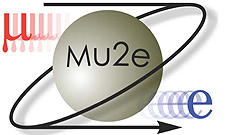It's nus to me about those experiment names
 |
Is that a ν or a v in NOvA?
|
When arriving at Fermilab, one of the first people I spoke to was a graduate student in the g-2 collaboration.
"What's it like working on Gee Two?" I asked.
"Gee MINUS Two, you mean," the grad student responded to me wearily, like he'd been through this before.
I hope he could forgive my confusion of a subtraction sign for a more commonplace hyphen, but it got me thinking, all these experiment names are a bit confusing to pronounce sometimes.
There are MicroBooNE and MiniBooNE, whose last two capitalized letters almost seem like a prompt to shout "NEH!" at their termini. There's the dark-matter experiment COUPP, where I think even those involved are unsure if those two p's are procedurally pronounced or not.
Even the spelling of the neutrino experiment NOvA, which seems fairly straightforward, presents some challenges. That lowercase v in the middle? It's not one: instead, it's a Greek letter masquerading as a Latin character, the lone actor on a stage full of Romans. The letter ν, Romanized nu and shaped like a v, is the symbol for neutrinos, hence its appearance in the name. So begins the confusion: is it NOvA or NO"nu"A?
To set the record straight, if you see a nu – also to be seen in MINERvA – just assume it's a v and carry on with your day.
But then comes Mu2e to further confuse the situation. It too contains a Greek letter – mu, which stands for muon – yet this time it's spelled out and Romanized. Perhaps it's because μ's shape is agonizingly close to that of the Latin u, and most people can't be bothered to tell the difference. So to prevent people from saying "You 2 e" and mistaking a sophisticated physics experiment for an outtake of Purple Rain, we may as well spell it out.
Also inconsistent is NuMI – there's that dastardly nu again, this time also Romanized – but I suppose those folks have the same reasoning as with Mu2e. They probably don't want people calling it "VEE EM EYE" or, worse, "vmee."
Read more
—Joseph Piergrossi
 |
The experiment name 'Mu2e' contains a Romanized Greek letter.
|
|